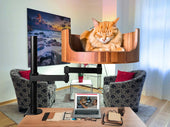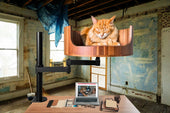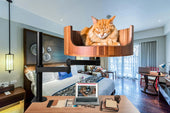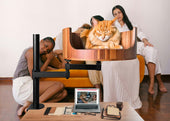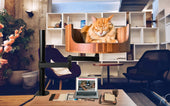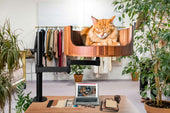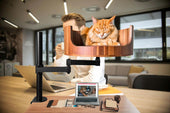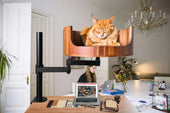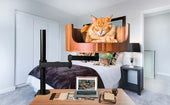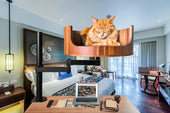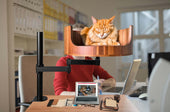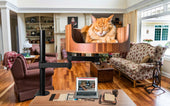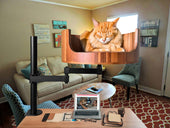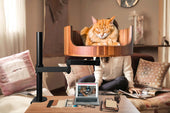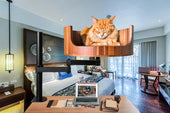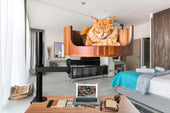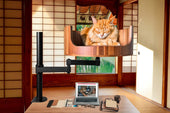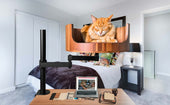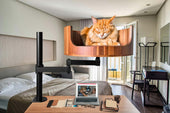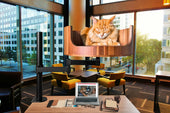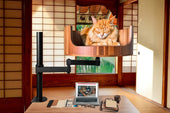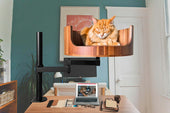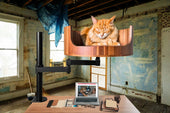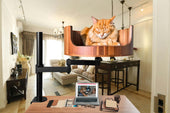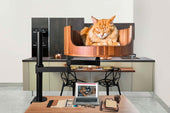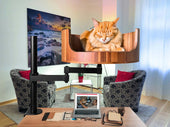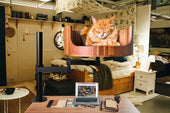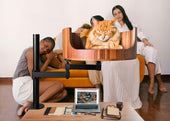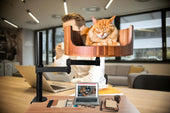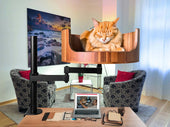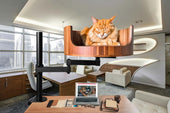
My Cat Is Limping: Understanding the Causes and Solutions
Share
If you've noticed that your beloved feline friend is limping, it can be a cause for concern and may leave you feeling worried and unsure of what to do next. There are a variety of reasons why a cat may start limping, and understanding the underlying causes is crucial in ensuring their health and well-being. From injuries and arthritis to more serious conditions like bone fractures or nerve damage, it's important to identify the root cause of your cat's limping in order to provide the necessary care and treatment.
In this article, we will explore the common reasons why cats may start limping, including potential injuries from falls or fights, arthritis, and other musculoskeletal issues. We will also discuss how to identify the signs of a limping cat, what steps you can take at home to help alleviate their discomfort, and when it's necessary to seek veterinary assistance. By understanding the causes of your cat's limping and taking proactive steps to address their pain and discomfort, you can help ensure that your feline companion stays healthy and happy for years to come.
1. Limping in cats can be caused by various factors such as injuries, arthritis, infections, or underlying medical conditions.
2. Observing your cat's behavior and seeking veterinary attention promptly is crucial in diagnosing the cause of limping.
3. Treatment options for limping cats may include medication, surgery, physical therapy, or lifestyle changes.
4. Understanding your cat's individual needs and providing a comfortable environment can aid in their recovery and overall well-being.
5. Regular veterinary check-ups and monitoring your cat's mobility can help detect and address any issues early on.
Causes of Limping in Cats
Limping in cats can be caused by a variety of factors, including injuries, infections, arthritis, and underlying health conditions. Injuries such as cuts, sprains, or broken bones can lead to limping in cats. Infections, such as abscesses or bacterial infections, can also cause pain and limping. Arthritis, which is common in older cats, can result in stiffness and difficulty walking. Other health conditions like diabetes or neurological disorders can also manifest as limping in cats.
Identifying the Cause of Limping
To properly address your cat's limping, it is important to identify the underlying cause. This may involve a thorough physical examination by a veterinarian, as well as diagnostic tests such as X-rays, blood work, or even a joint tap. By pinpointing the root cause of the limping, you can ensure appropriate treatment and management for your cat's condition.
Treatment Options for Limping Cats
The treatment for limping in cats will vary depending on the underlying cause. In cases of injuries, treatment may involve rest, pain medication, and possibly surgery for more severe injuries. Infections may require antibiotics or other medications to clear up the infection. Arthritis management may include pain relief medications, joint supplements, or physical therapy. For other health conditions, treatment will be tailored to address the specific issue causing the limping.
Preventing Limping in Cats
While some causes of limping in cats may be inevitable, there are steps you can take to help prevent injuries and other issues that may lead to limping. Keep your cat indoors to reduce the risk of accidents or fights with other animals. Provide a safe and comfortable environment for your cat to minimize the chances of falls or other injuries. Regular veterinary check-ups can also help catch any potential health issues early before they escalate into limping or other serious problems.
Frequently Asked Questions
How can the Desk Cat Nest help my limping cat?
The Desk Cat Nest provides a comfortable and supportive space for your cat to rest and recuperate. The soft cushioning inside the nest is gentle on their limbs, allowing them to relax without putting extra strain on their injured leg.
Is the Desk Cat Nest suitable for cats of all sizes?
Yes, the Desk Cat Nest is designed to accommodate cats of various sizes. The spacious interior provides ample room for cats to stretch out, while the sturdy construction ensures that even larger cats will feel secure and supported when using the nest.
Can the Desk Cat Nest be easily cleaned?
Yes, the Desk Cat Nest comes with a removable and washable cover, making it easy to keep the nest clean and hygienic. Simply unzip the cover and machine wash it on a gentle cycle for quick and convenient cleaning.
Will my cat enjoy using the Desk Cat Nest?
Most cats love the cozy and enclosed space that the Desk Cat Nest provides. The cushioning inside the nest is soft and inviting, making it a comfortable spot for your cat to rest and relax. However, every cat is unique, so it may take some time for your cat to adjust to the nest.
Can the Desk Cat Nest help with long-term mobility issues?
The Desk Cat Nest is not a medical device and should not be used as a substitute for professional veterinary care. While the nest can provide temporary relief and comfort for a limping cat, it is important to consult with a vet for long-term mobility issues or injuries.
In conclusion, if your cat is limping, investing in a Desk Cat Bed can provide valuable support and comfort for your furry friend. The elevated design of the bed will help alleviate pressure on your cat's joints and muscles, promoting proper alignment and aiding in their recovery. Additionally, the plush cushioning will offer a cozy spot for rest and relaxation, allowing your cat to heal comfortably. With the Desk Cat Bed, you can ensure your beloved pet receives the care and comfort they need to get back on their feet in no time.



